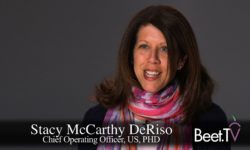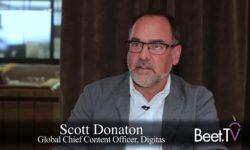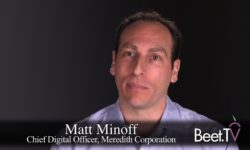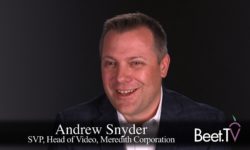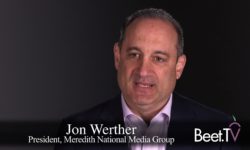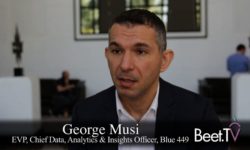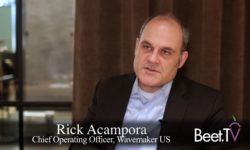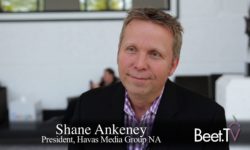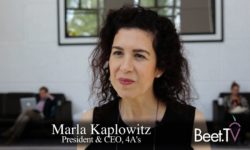MIAMI-Having been in advertising since the 1970’s, David Sable knows all about the value exchange between consumers and advertisers. So when he views the controversy about Facebook and its users’ data, he sees “an awakening of the notion of data” and suggests another value exchange might be in order.
“Let’s be very clear. This is not like everybody woke up this morning and discovered that they were giving their data away,” the Global CEO of Y&R says in this interview with Beet.TV at the 4A’s Accelerate conference. He was referencing the ability of companies like Cambridge Analytica being able to harvest vast amounts of Facebook data.
“I think the big revelation was Cambridge not just taking your data and my data if it was us, but then taking our friends’ data as well. I think it was that complete vacuuming that freaked everybody out.”
The resulting awakening is how many people make money off of other peoples’ data. With regard to Facebook, “The original deal was yeah you get to target me, which is okay” because television advertisers have always targeted audiences. “In return for that you watched all these great shows for free.”
One difference was that TV networks and advertisers “didn’t make extra money” from audience targeting.
“These guys are making a fortune by limiting, if you will, access to you. They’re the guardian between you and everything else. And it’s not just Facebook. It’s Google, it’s everybody,” Sable says.
He’s long thought that perhaps digital companies should share their revenue with users whose data is the source of that revenue. “What does it cost me to be on your platform? Take that out of the equation. I’ll give you that money up front,” is how he articulates it.
After all, direct-response advertisers have always been willing to pay an “allowable” to secure new customers. That could be, say, $400 for an automaker will to pay to generate test drives. “If they’re spending four hundred dollars to get you into a car and they’re giving that four hundred to Facebook, why shouldn’t Facebook give you two hundred?” Sable asks.
“The truth is, at some point you should be in charge of your data and you should be able to control the amount of money that you either want to take in or give out or whatever.”
Asked about the continued evolution of linear TV ad formats, Sable says he’s “not sure what the new form factor is.” Back in 1976, his agency was experimenting with 15-second ads. “Now we’ve split it in half. Big deal.”
Sable is skeptical about one-to-one marketing being a cure-all for brands, given how “serendipitous” human beings are on their circuitous paths to purchase.
“That’s why you hear more people talking about brand,” he says. “As the Facebooks and the rest began to discover that in fact people weren’t necessarily going that pathway and buying specific things, they started themselves talking about brand advertising. They knew about serendipity.”
This video is part of a series titled The Road to the Digital Content NewFronts. It is a preview of topics to be explored at IAB’s NewFronts, which begin on April 30. This series is presented by Meredith Corporation. For more videos from the series, please visit this page.












